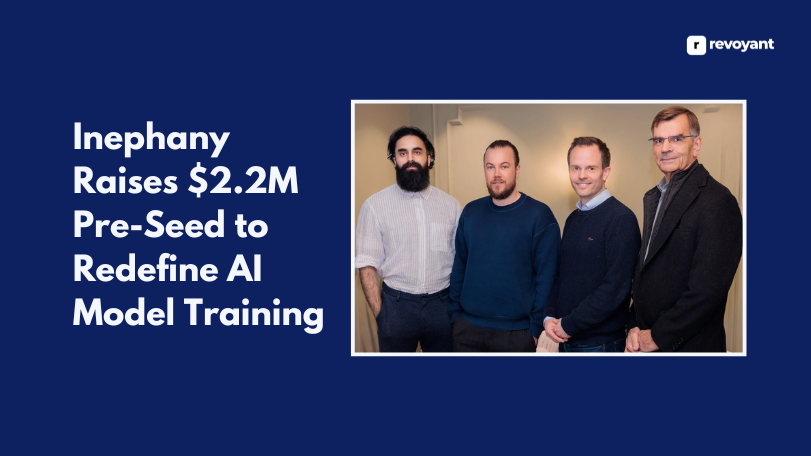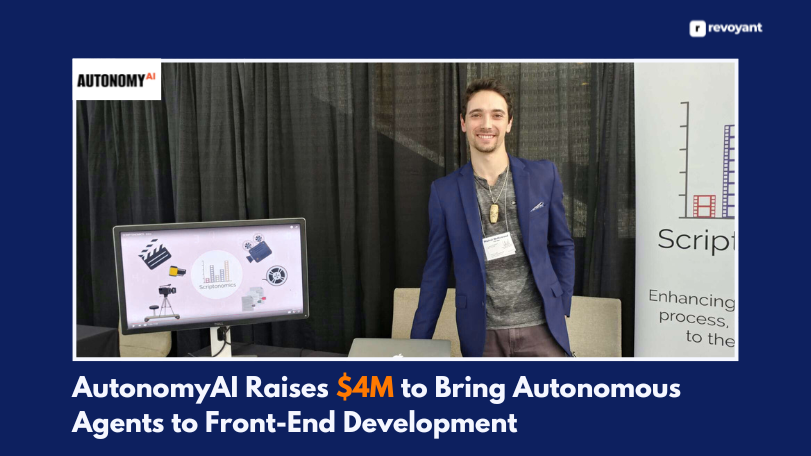“Google Dialogflow Vs Microsoft Azure Bot Service” compares two leading conversational AI platforms, each offering unique strengths in NLP and integrations for chatbot development. Choosing the right conversational AI platform is critical for businesses looking to implement intelligent chatbots and virtual assistants. Two major players in this space—Google Dialogflow and Microsoft Azure Bot Service—offer powerful natural language processing (NLP) capabilities, integrations, and scalability.
Both platforms are widely used across industries, helping businesses automate interactions, improve customer support, and create personalized user experiences. Google Dialogflow, backed by Google’s AI expertise, brings advanced language understanding and seamless integration with Google services. It offers a user-friendly interface and strong multilingual support, making it a preferred choice for those looking to build conversational agents without extensive coding.
On the other hand, Microsoft Azure Bot Service provides a comprehensive ecosystem with deep integration into Microsoft’s cloud infrastructure, enterprise security, and support for multiple AI models. Businesses already using Microsoft tools often find its flexibility and scalability beneficial for large-scale deployments.
Both platforms have unique strengths and cater to different needs. Understanding their core capabilities, integration options, and NLP effectiveness can help businesses determine which solution aligns better with their technical and strategic goals.
Key Takeaways
- Google Dialogflow offers an intuitive interface and quick deployment, making it suitable for businesses looking for easy-to-manage chatbot solutions.
- Microsoft Azure Bot Service is built for enterprises, providing strong security, deep integration with Microsoft tools, and scalable cloud capabilities.
- Dialogflow supports over 20 languages, making it a great choice for businesses targeting a global audience.
- Azure Bot Service works well with Microsoft Teams, Office 365, and Active Directory, making it ideal for internal enterprise communication.
- Dialogflow integrates smoothly with popular messaging platforms like Google Assistant, Facebook Messenger, Telegram, and WhatsApp.
- Azure Bot Service leverages LUIS for NLP, allowing for advanced customization and intent recognition in chatbot interactions.
- Businesses looking for a no-code or low-code chatbot solution may find Dialogflow more accessible, while Azure offers greater flexibility for developers.
- Both platforms provide free tiers and scalable pricing based on usage, making them adaptable to different business sizes.
- Choosing between these platforms depends on the technical requirements, communication channels, and existing business infrastructure.
- AI-driven chatbots continue to evolve, and selecting the right tool helps businesses enhance customer interactions and operational efficiency.
Overview of Google Dialogflow and Microsoft Azure Bot Service
Google Dialogflow and Microsoft Azure Bot Service are widely used platforms for building AI-driven chatbots and virtual assistants. Each offers a set of tools designed to process natural language, interpret user intent, and integrate with communication channels. Their ability to streamline customer interactions has made them valuable for businesses looking to automate responses, assist users, and enhance engagement.
Dialogflow is powered by Google’s Cloud Natural Language technology, allowing it to process conversations accurately. It supports multiple languages and integrates with platforms such as Google Assistant, Facebook Messenger, Slack, and Telegram. Developers benefit from its intuitive interface, making it accessible to both technical and non-technical users. Its advanced capabilities include sentiment analysis, speech recognition, and automated replies, making it useful for businesses focused on customer support and interactive applications.
Azure Bot Service, backed by Microsoft’s cloud infrastructure, is built for enterprises that rely on Microsoft tools. It integrates with services such as Teams, Skype, and Cortana, making it a strong choice for companies using Microsoft products. The platform uses LUIS (Language Understanding Intelligent Service) to analyze text, detect intent, and provide automated responses. With enterprise-grade security, scalability, and flexible hosting options, Azure Bot Service is suitable for businesses that need a highly customizable AI-powered assistant.
Both platforms provide free tiers but charge for advanced functions.
Natural Language Processing (NLP) Capabilities of Google Dialogflow and Microsoft Azure Bot Service
Both platforms use AI to understand and process human language. Each system has unique features, making them useful for different needs.
Google Dialogflow- NLP Capabilities and Advantages
Google Dialogflow leverages Google Cloud Natural Language technology to process language efficiently and accurately. With support for over 20 languages, it caters to a broad global user base, making it a versatile solution for multilingual applications.
Its natural language processing (NLP) capabilities enable it to identify context, intent, and user sentiment precisely. Developers can utilize SDKs across over 14 platforms, including web and mobile applications and virtual assistants. This flexibility allows businesses to build conversational AI solutions that function seamlessly across multiple devices.
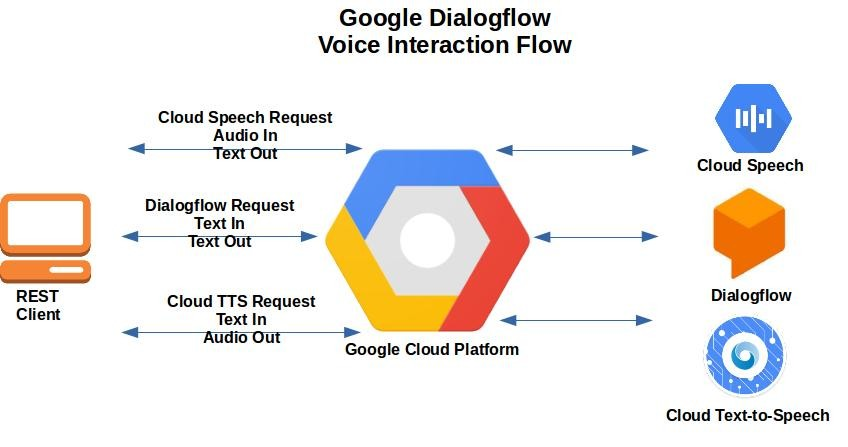
Features such as automatic speech recognition (ASR) improve the effectiveness of voice assistants on platforms like Google Assistant and interactive voice response (IVR) systems. Dialogflow’s deep learning models continuously refine interactions, adjusting responses in real-time based on user input. Integration with APIs allows it to access customer data from CRM platforms and cloud-based services, enhancing personalization and engagement. Its adaptability makes it a strong choice for businesses building interactive voice and text-based conversational AI systems.
Microsoft Azure Bot Service- NLP Capabilities and Advantages
Microsoft Azure Bot Service relies on LUIS (Language Understanding Intelligent Service) to deliver high-level NLP functionality. It excels at recognizing user intent and processing natural language accurately, making it a reliable option for developing AI-powered chatbots and virtual assistants.
Its seamless integration with Microsoft tools, including Teams, Azure Cognitive Services, and Active Directory, makes it especially effective for enterprise applications. Developers familiar with Node.js or C# can build and scale bots efficiently, ensuring smooth deployment across multiple communication channels, including Facebook Messenger and Twilio SMS.
With enterprise-grade security and cloud scalability, Azure Bot Service supports large-scale conversational AI solutions. Its ability to handle complex dialogues and structured data interactions allows businesses to automate customer support, internal communications, and various chatbot-driven processes. Organizations already utilizing Microsoft’s cloud ecosystem can benefit from its deep integration, making it a practical solution for AI-driven communication and automation.
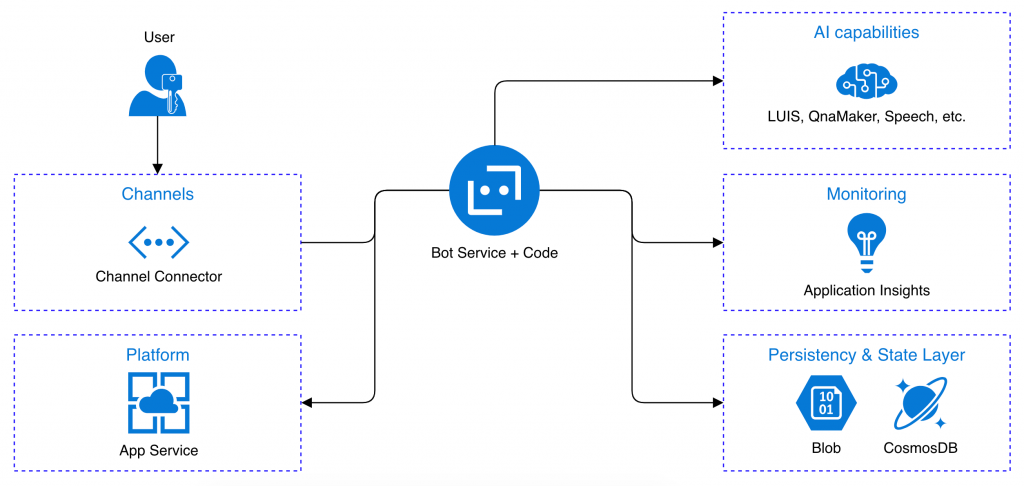
Integration and Compatibility of Google Dialogflow and Microsoft Azure Bot Service
Both Google Dialogflow and Microsoft Azure Bot Service offer extensive integration options, enabling businesses to connect their conversational AI solutions with various platforms, applications, and communication channels. While both provide API-based integrations, their strengths lie in different ecosystems and use cases.
Google Dialogflow- Integration and Compatibility
Google Dialogflow is designed for versatility, offering built-in integrations with popular messaging platforms such as:
- Google Assistant – Seamless connection for voice-enabled AI applications.
- Facebook Messenger & WhatsApp – Supports direct chatbot deployment for social media interactions.
- Telegram, Slack, and LINE – Compatible with widely used workplace and community chat applications.
- IVR (Interactive Voice Response) Systems – Enables AI-driven customer service for phone-based interactions.
- Web and Mobile SDKs – Allows developers to integrate conversational AI into websites, Android, and iOS applications.
Beyond messaging apps, Dialogflow can connect with enterprise tools via REST and gRPC APIs, allowing developers to link AI-powered conversations with CRM systems, customer support software, and backend databases. Since it runs on Google Cloud, it naturally integrates with other Google services like Firebase, BigQuery, and Cloud Functions, making it an appealing choice for organizations already using Google’s cloud infrastructure.
Microsoft Azure Bot Service- Integration and Compatibility
Microsoft Azure Bot Service is built to work seamlessly within the Microsoft ecosystem, making it a strong choice for enterprises that rely on Microsoft products. Key integrations include:
- Microsoft Teams – Optimized for internal enterprise communications and AI-driven support bots.
- Skype & Cortana – Provides interactive voice assistant capabilities.
- Azure Cognitive Services – Connects with AI tools such as Speech Recognition, Computer Vision, and Text Analytics.
- Active Directory & Office 365 – Enables chatbot authentication, data access, and workflow automation within Microsoft environments.
- Third-Party Platforms – These are compatible with Facebook Messenger, Twilio SMS, and WhatsApp via the Microsoft Bot Framework.
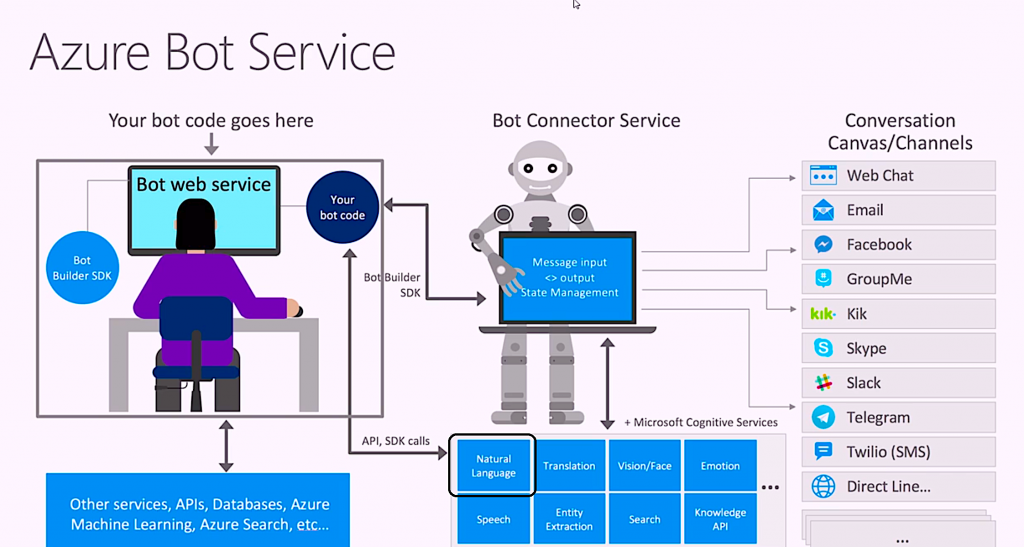
Microsoft’s Bot Framework SDK allows developers to build, deploy, and scale bots while ensuring security through Azure’s compliance standards. Enterprises using Azure’s cloud services can benefit from seamless integration with DevOps pipelines, cloud storage, and database services like Cosmos DB.
Which One is Better for Integration?
- Google Dialogflow is ideal for businesses that require chatbots across multiple communication channels, including voice, social media, and web applications. Its API-based flexibility makes it well-suited for startups and customer-facing businesses.
- Microsoft Azure Bot Service is a better fit for enterprises already using Microsoft tools, as it provides deep integration with corporate applications and cloud-based AI services. Its enterprise security and authentication options make it a preferred choice for large-scale implementations.
Choosing the right platform depends on the existing tech stack, communication needs, and long-term scalability goals.
Ease of Use and Developer Experience of Google Dialogflow and Microsoft Azure Bot Service
Building and managing conversational AI requires a platform that balances usability with technical capabilities. Both Google Dialogflow and Microsoft Azure Bot Service offer tools for developers, but their approaches cater to different user groups.
Google Dialogflow- User-Friendly and Accessible
Google Dialogflow provides an interface that allows users to build chatbots without extensive programming knowledge. The platform includes a visual flow builder that simplifies intent mapping, making it easier for non-developers to create structured conversations. Those with coding expertise can leverage APIs and SDKs to expand functionality.
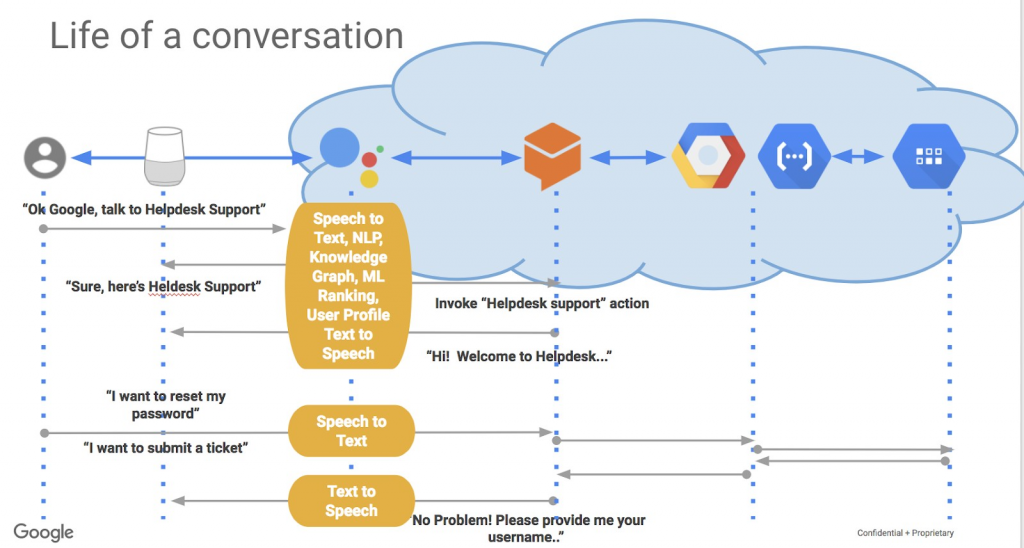
The platform supports multiple development frameworks, including Python, Node.js, and Java. Pre-built agents help users get started quickly, and cloud-based hosting removes the need for complex infrastructure setup. The testing console allows real-time debugging, helping developers refine interactions without switching between tools.
Deployment is straightforward, with integrations across messaging platforms, web apps, and voice assistants. The combination of a low-code environment and advanced developer tools makes it suitable for businesses that want flexibility without heavy technical investment.
Microsoft Azure Bot Service- Developer-Focused and Scalable
Microsoft Azure Bot Service is designed for users who are comfortable with coding and enterprise-grade development. It requires familiarity with Node.js or C# and works through the Microsoft Bot Framework, which offers detailed customization for AI-driven conversations.
Unlike Google Dialogflow’s visual interface, Azure Bot Service relies on structured programming. Developers can use the Bot Framework SDK to build and train models, allowing more fine-tuned control over conversations. While this approach provides flexibility, it also requires more effort than Dialogflow’s built-in tools.
The platform integrates with Azure Cognitive Services, giving developers access to AI-driven speech recognition, text analysis, and computer vision. Businesses working within the Microsoft ecosystem benefit from seamless deployment across Microsoft Teams, Office 365, and Active Directory.
Which One is More User-Friendly?
Google Dialogflow is an ideal choice for those looking for an easy-to-use interface with built-in NLP tools. It offers a balance between simplicity and customization, making it useful for both beginners and experienced developers.
Microsoft Azure Bot Service provides greater flexibility for developers who need advanced capabilities and deeper integration with Microsoft products. It suits enterprise environments where customization, scalability, and security are priorities.
The decision between the two depends on the technical expertise available and the complexity of the chatbot requirements.
Pricing & Cost Comparison of Google Dialogflow and Microsoft Azure Bot Service
Pricing & Cost Comparison
| Feature | Google Dialogflow | Microsoft Azure Bot Service |
|---|---|---|
| Free Tier | Includes 1,000 text queries/month | Includes 10,000 messages/month |
| Text-Based Queries | $0.002 per request after free usage | $0.50 per 1,000 messages |
| Voice-Based Queries | $0.0065 per request | Priced separately via Azure Speech API |
| Advanced Features | Additional costs for Speech-to-Text & Dialogflow CX | LUIS and QnA Maker charged separately |
| Hosting Costs | Included in Google Cloud pricing | Azure hosting required, priced separately |
| Enterprise Plan | Custom pricing based on usage | Custom pricing for large-scale deployments |
Google Dialogflow and Microsoft Azure Bot Service have different pricing structures. Each platform offers free tiers, but scales costs based on usage, features, and integrations.
Google Dialogflow Pricing Breakdown
The standard edition of Google Dialogflow is free. Paid plans start at $0.002 for each text request. For voice services, phone calls cost up to $0.075 per minute. These charges apply to both AI-based processing and integrations.
Pricing varies with usage volume and service type. Text requests are more affordable than audio or call-related tasks. Developers can test on the free plan before upgrading for advanced features like more API calls or enterprise support.
Microsoft Azure Bot Service Pricing Breakdown
Microsoft Azure Bot Service provides a free plan supporting up to 1,000 messages per month. For greater usage, pricing begins at $0.50 for every 1,000 additional messages. Paid plans include advanced options, such as access to Azure Cognitive Services like LUIS for natural language understanding or QnA Maker for FAQs.
This pricing structure accommodates businesses of various sizes. It works effectively with tools like Microsoft Teams and Twilio SMS while supporting growth requirements in conversational AI platforms and virtual assistants.
Use Cases and Best Fit of Google Dialogflow and Microsoft Azure Bot Service
Selecting the right conversational AI platform depends on the specific needs of a business, existing infrastructure, and the intended use cases. Both Google Dialogflow and Microsoft Azure Bot Service offer strong NLP capabilities, but their strengths cater to different industries and applications.
| Use Case | Best Fit | Why It Stands Out |
|---|---|---|
| Customer Support Chatbots | Google Dialogflow | Quick deployment, built-in integrations with popular messaging apps, and intuitive management for customer service teams. |
| Enterprise Communication | Microsoft Azure Bot Service | Deep integration with Microsoft Teams, Active Directory, and Office 365, making it ideal for internal enterprise applications. |
| Multilingual Conversational AI | Google Dialogflow | Supports over 20 languages natively, enabling businesses to scale chatbots for global audiences. |
| AI-Powered Virtual Assistants | Microsoft Azure Bot Service | Works seamlessly with Cortana and Azure Cognitive Services for voice-based AI applications. |
| Omnichannel Chatbots | Google Dialogflow | Integrates easily with web apps, mobile apps, and platforms like Facebook Messenger, WhatsApp, and Telegram. |
| Security-Driven Applications | Microsoft Azure Bot Service | Enterprise-grade security and compliance make it a strong choice for industries with strict regulatory requirements. |
| Interactive Voice Response (IVR) | Google Dialogflow | Automatic Speech Recognition (ASR) optimizes IVR systems for call centers and customer support. |
| AI Integration with Business Workflows | Microsoft Azure Bot Service | Works well with Azure Logic Apps and Power Automate for automating business processes. |
Which Platform Works Best?
- Google Dialogflow is a better choice for businesses prioritizing ease of use, fast chatbot deployment, and omnichannel support across different platforms. It suits startups, e-commerce companies, and customer service teams looking for intuitive NLP solutions without requiring extensive coding.
- Microsoft Azure Bot Service is ideal for enterprises needing deep integration with Microsoft tools, scalable security, and advanced customization. Companies working within Microsoft’s ecosystem or handling internal enterprise communication will benefit from its structured development framework and AI-powered automation.
Businesses should assess their technical resources, scalability needs, and integration requirements to determine the best platform for their chatbot or AI-driven assistant.
Conclusion
Both Google Dialogflow and Microsoft Azure Bot Service provide strong conversational AI capabilities, making them valuable choices for businesses looking to integrate intelligent chatbots and virtual assistants. Each platform has its strengths, catering to different industries and user needs.
Google Dialogflow stands out for its intuitive interface, broad language support, and easy integration with widely used messaging platforms, making it ideal for customer-facing applications. Microsoft Azure Bot Service, on the other hand, offers deep integration with enterprise tools, robust security features, and scalability within the Microsoft ecosystem, making it a preferred option for large organizations and internal business operations.
Selecting the right platform depends on factors such as the desired communication channels, existing infrastructure, and technical resources. Businesses seeking a straightforward, fast-to-deploy chatbot solution may find Google Dialogflow more accessible, while those requiring custom-built, enterprise-grade applications may benefit from Azure’s flexibility and security.
Both platforms continue to evolve, bringing new features that enhance conversational AI capabilities. By aligning the choice with specific business goals, companies can build AI-driven interactions that improve user engagement and streamline operations.
Frequently Asked Questions
What is the difference between Google Dialogflow and Microsoft Azure Bot Service?
Google Dialogflow and Microsoft Azure Bot Service are conversational AI platforms. Dialogflow integrates with the Google Cloud Platform, offering strong natural language understanding (NLU). Azure Bot Service connects with Azure Cognitive Services, providing tools like LUIS for NLP and seamless integration with Microsoft Teams.
Which platform offers better support for conversational interfaces?
Both excel in creating conversational user interfaces. Google Dialogflow works well with virtual assistants like Google Assistant and supports Facebook Messenger. Microsoft’s bot framework integrates deeply with services like Twilio SMS, IVR systems, and web interfaces through APIs.
How do pricing models compare between these two platforms?
Dialogflow provides a free plan for basic use cases but charges based on API calls as usage grows. Azure Bot Service also has flexible pricing tied to its cloud access security broker features and additional integrations like QnA Maker or speech-to-text capabilities.
Can both platforms handle advanced Natural Language Processing (NLP)?
Yes, both rely on learning technologies to improve NLP performance over time. Dialogflow focuses heavily on automatic speech recognition (ASR), while Microsoft uses LUIS within its ecosystem to enhance human-computer interaction.
Which platform is better for personalization in bots?
Microsoft excels at personalization when paired with tools like Azure Functions or knowledge-based solutions from QnA Maker, which are ideal for tailored experiences in enterprise settings. However, Google’s focus on user experience through NLU also ensures high-quality interactions.
Are there key differences in integration options?
Yes, integrations vary widely! Dialogflow works seamlessly across multiple channels, such as the web or apps, using APIs while indirectly supporting search engines via voice commands through Google Assistant; meanwhile, Azure shines when integrated into business workflows using tools from the broader Microsoft ecosystem, including Teams or Cognitive Services modules like interactive voice response setups (IVRs).


